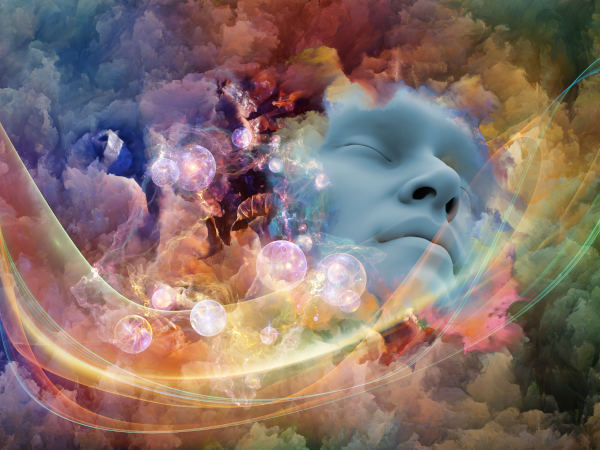Everything in existence, from the vast cosmos to the smallest particle, is governed by the power of the elements. These forces shape both the macrocosm—the expansive universe—and the microcosm, the intricate world within each individual. Just as the grand celestial bodies follow their cosmic order, so too does the human being function as a reflection of this universal structure.
In both the external and internal realms, the elements operate as unseen architects, influencing physical matter, energy, and even consciousness. They are not mere abstract concepts but active forces that determine creation, transformation, and dissolution. Those who understand these forces can align themselves with the natural order and harness their power for personal and spiritual growth.
How the Elements Interconnect Like a Cosmic Clockwork
The universe functions like a precise and interwoven mechanism, where each element plays a crucial role. Fire, water, air, earth, and the ethereal principle of Akasa are not isolated forces but interdependent aspects of a greater whole. Like the gears of a clock, they interact seamlessly, creating movement, balance, and transformation.
Fire expands and generates energy, while water contracts and stabilizes. Air serves as a mediator, facilitating movement and flow. Earth solidifies and provides structure. Akasa, the subtle and invisible quintessence, binds them all together, maintaining harmony in the grand design of existence.
These interactions govern everything from the cycles of nature to the inner workings of the human mind. Ancient wisdom teaches that mastery over these elemental forces leads to mastery over life itself, offering insight into health, emotions, and even the spiritual path.
The Hidden Power of the Elements in Ancient and Modern Wisdom
Throughout history, sages, mystics, and scholars have studied the elements to uncover their deeper significance. Ancient traditions, from Eastern philosophies to Western esoteric teachings, recognized that the elements hold the key to understanding creation. The Tarot, for instance, symbolizes elemental mastery through the Magician, who wields tools representing fire, air, water, and earth—signifying control over these universal principles.
In modern times, science echoes these ancient truths. Chemistry, physics, and even psychology explore the fundamental principles of energy, transformation, and balance—concepts deeply rooted in elemental wisdom. Whether through spiritual practices or scientific exploration, the understanding of the elements continues to shape human knowledge, offering profound insights into the nature of reality.
The Five Fundamental Elements
The concept of the fundamental elements has existed for thousands of years, forming the backbone of both Eastern and Western traditions. In ancient India, the five elements—known as the Pancha Mahabhutas—were considered the building blocks of existence. Hindu philosophy describes these as Akasha (ether), Vayu (air), Agni (fire), Apas (water), and Prithvi (earth), each contributing to the composition of the human body and the universe itself.
Similarly, in ancient Greece, philosophers such as Empedocles and Aristotle classified the world into four primary elements—fire, air, water, and earth—believing these to be the foundation of all physical matter. Later, esoteric traditions in the West incorporated a fifth element, ether or spirit, mirroring the Eastern concept of Akasha. This unifying force was seen as the source from which the other elements emerged, connecting the material and spiritual worlds.
While the terminology and interpretations varied, the core understanding remained the same—these elements govern the physical, mental, and spiritual aspects of existence. From alchemy to Ayurveda, from Hermeticism to Chinese Wu Xing theory, the wisdom of the elements has shaped how humanity perceives the universe.

Understanding the Tattwas – The Five Elemental Forces Explained
The Tattwas are subtle energy principles that represent the five elements in their purest form. These vibrational forces influence both the material and non-material realms, dictating the behavior of energy, consciousness, and transformation. Each Tattwa has distinct characteristics that define its function:
- Akasha (Ether) – The most subtle element, representing space, expansion, and the source of all creation. It is the realm of potentiality and spiritual connection.
- Vayu (Air) – The force of movement and dynamism. It governs thoughts, breath, and motion, providing the balance between creation and dissolution.
- Tejas or Agni (Fire) – The principle of energy, transformation, and power. Fire represents willpower, metabolism, and the driving force behind change.
- Apas (Water) – The element of fluidity, emotion, and cohesion. Water nurtures life, regulates energy, and symbolizes intuition.
- Prithvi (Earth) – The foundation of stability, structure, and form. Earth provides the necessary grounding and physical manifestation of all things.
These elements are not static; they interact continuously, creating cycles of balance and imbalance. Mastering the knowledge of Tattwas allows one to understand the hidden mechanics of reality and influence energy flows in both the physical and metaphysical worlds.
“The whole universe is composed of five elements and that which is not composed of these five cannot be said to exist.” — Mahabharata
The Role of the Elements in Mystical and Spiritual Traditions
The elements are deeply embedded in mystical and spiritual traditions worldwide, guiding rituals, meditations, and initiatory practices. In alchemy, they represent phases of transformation, where matter and consciousness are purified to achieve enlightenment. In yogic practices, the elements correspond to the chakras, each associated with a different energetic center within the body.
Fire is revered in Vedic ceremonies, where sacred flames act as a bridge between the divine and the material world. Water is used in purification rituals across cultures, symbolizing emotional cleansing and renewal. Air, as the element of breath, plays a crucial role in pranayama and spiritual awakening. Earth, the grounding force, is honored in Pagan and indigenous traditions as the source of fertility and sustenance.
Beyond rituals, the elements also guide personal growth. Their presence within the psyche influences temperament, emotions, and mental clarity. By balancing these energies within oneself, one attains harmony, wisdom, and spiritual ascension.
Elemental Correspondences
| Element | Symbolism | Physical Manifestation | Spiritual Meaning |
| Fire | Energy, transformation | Heat, combustion, electricity | Willpower, passion, destruction & creation |
| Water | Emotion, adaptability | Oceans, rivers, rain | Intuition, healing, fluidity |
| Air | Thought, movement | Wind, breath, atmosphere | Communication, intellect, spirit |
| Earth | Stability, foundation | Soil, mountains, minerals | Strength, grounding, structure |
| Akasa | Ether, the unseen force | Space, vibration | Unity, divine wisdom, cosmic balance |
The Fiery Force – The Principle of Fire
Fire is the first of the four tangible elements to arise from Akasa, the primordial ether. In the grand design of creation, Akasa holds within it the potential for all elements, and fire is the initial force that manifests from this infinite expanse. As the most active and radiant element, fire acts as a bridge between the immaterial and material worlds, sparking the transformation of energy into matter.
Ancient traditions often describe fire as the light of creation, igniting the cosmic process that leads to the formation of all things. Without fire, movement and life would not exist—it is the essence of activity, passion, and evolution. In both Eastern and Western mystical traditions, fire is regarded as the divine spark, symbolizing the first moment of creation, whether in the Big Bang or in spiritual enlightenment.

The Dual Nature of Fire – Creation and Destruction in Balance
Fire is both a giver and a destroyer. It brings warmth, sustains life, and fuels progress, yet it also has the power to consume and reduce everything to ashes. This duality is what makes fire a symbol of transformation—it is never stagnant, always reshaping and refining.
In nature, fire fuels the cycle of life. Forests rely on occasional wildfires to clear away dead material and make space for new growth. On a personal level, fire represents inner purification, burning away negativity and old patterns to make way for renewal. Yet, when uncontrolled, fire can become destructive—whether as unchecked aggression, chaos, or the literal devastation of flames.
Throughout history, fire has been revered and feared, a force that demands respect and mastery. It is not inherently good or bad but instead follows the law of balance. Those who learn to harness its energy can use it for creation, illumination, and strength, while those who misuse it may face its destructive consequences.
Fire’s Role in Energy, Willpower, and Transformation
Among the elements, fire is the greatest catalyst for change. It governs energy, willpower, and passion, making it the driving force behind action and achievement. In spiritual practices, fire is associated with the solar plexus chakra, the center of personal power and determination.
Fire fuels desire, ambition, and leadership. It is the force that compels individuals to take risks, pursue goals, and challenge limitations. Without fire, there would be no motivation, no movement, no evolution. In alchemy, fire is the essential tool for transmutation—turning base metals into gold and refining the soul through inner trials.
This element also plays a crucial role in mental and emotional strength. Those with a balanced fire element exhibit confidence, courage, and resilience. Too much fire, however, can lead to impulsiveness, aggression, and burnout. Learning to control fire within oneself is key to personal mastery and enlightenment.
The Connection Between Fire and the Electric Fluid
Fire is intimately linked to the electric fluid, a dynamic force that governs activity, expansion, and intensity. In esoteric teachings, the electric fluid is considered the positive, masculine principle—radiating outward, initiating action, and igniting transformation. Fire embodies these qualities, acting as the conduit for manifestation and change.
This connection is evident in the nervous system and bioelectricity of the human body. Fire governs the impulses that transmit signals, the metabolism that fuels energy, and the heat that sustains life. In higher mystical practices, the electric fluid is the force behind mental projection, willpower, and spiritual awakening.
Just as fire and electricity can be harnessed for great innovation or uncontrolled destruction, their mastery requires wisdom. Those who understand the subtle balance between fire and the electric fluid can channel immense power, whether in the form of leadership, creativity, or spiritual elevation.
“The mind is not a vessel to be filled but a fire to be kindled.” — Plutarch
The Fluid Depths – The Principle of Water
Water and fire are opposing yet complementary forces, embodying the perfect balance of expansion and contraction, heat and coolness, activity and stillness. Fire is a force of transformation, pushing forward with intensity and rapid movement, while water offers fluidity, adaptability, and nourishment. Where fire is aggressive and consuming, water is gentle yet persistent, carving through stone over time.
Despite their contrasts, fire and water work together in harmony. Fire needs water to regulate its force—too much fire leads to destruction, while water ensures balance. Similarly, water requires the energy and warmth of fire to remain dynamic and in motion; without fire, water becomes stagnant, lacking vitality. This interplay reflects the natural cycles of life, where both elements must coexist to sustain equilibrium in nature, the body, and the mind.

The Dual Polarities of Water – Life-Giving and Destructive Forces
Water is often seen as a source of life—essential for growth, purification, and renewal. It quenches thirst, nourishes the earth, and sustains all living beings. Civilizations have always thrived near water sources, recognizing its vital role in survival and prosperity. In spiritual traditions, water is used for cleansing rituals, symbolizing rebirth, purification, and emotional healing.
However, water also possesses a formidable and destructive nature. Raging floods, tsunamis, and relentless storms demonstrate its raw power. Just as fire can burn uncontrollably, water can overwhelm and consume. This dual nature reflects the unpredictability of emotions, as water is deeply connected to the subconscious mind. A calm lake mirrors inner peace, while a violent storm represents emotional turmoil. Mastering the water element means understanding its ability to heal and destroy, nurture and drown, and learning to flow with its rhythms.
Water’s Link to Magnetism and the Flow of Energy
Water has an intrinsic connection to magnetism and energy flow, acting as a conductor for both physical and spiritual forces. In esoteric teachings, water is associated with the magnetic fluid, a receptive and attracting force that balances the electric nature of fire. Just as the moon influences the tides, water governs cycles of attraction, reflection, and emotional depth.
In the human body, water regulates circulation, hydration, and energy transmission. It allows for the smooth movement of bioelectric signals, ensuring the proper functioning of the nervous system and cellular communication. On a metaphysical level, water enables intuitive perception, deep insight, and the ability to connect with the unseen.
Magnetism also plays a role in manifestation and energy work. Water’s receptive quality makes it an ideal medium for absorbing, storing, and directing energy. Many spiritual traditions use water in rituals to amplify intentions, cleanse negative energies, and restore harmony.
The Essential Role of Water in Creation and Sustenance
Water is present in all aspects of creation, acting as a universal sustainer. It shapes landscapes, nourishes ecosystems, and serves as the foundation of biological life. Even in the formation of planets, water is a crucial element, influencing geological and atmospheric conditions.
In the human experience, water represents adaptability and emotional intelligence. Just as it takes the shape of its container, water teaches the importance of flowing with change rather than resisting it. It serves as a reminder that strength lies not only in force but in resilience and the ability to navigate obstacles with grace.
Water’s influence extends beyond the physical—it is a carrier of memory and consciousness, holding within it the essence of transformation and renewal. Whether in the vast oceans or within each individual, water remains an ever-present force of creation, sustenance, and infinite possibility.
“Nothing is softer or more flexible than water, yet nothing can resist it.” — Lao Tzu
Fire & Water – The Contrast and Harmony
| Attribute | Fire | Water |
| Nature | Active, expansive | Passive, receptive |
| Energy | Radiates outward | Moves inward |
| Effect | Heats, transforms | Cools, nourishes |
| Metaphysical Role | Represents will and drive | Represents emotions and intuition |
| Balance | Overpowering fire leads to aggression | Excess water leads to emotional instability |
The Breath of Life – The Principle of Air
Air serves as the harmonizing force between the opposing elements of fire and water. Where fire represents expansion and water signifies contraction, air acts as a neutral medium, allowing these forces to interact without clashing. It carries the warmth of fire and the moisture of water, blending their energies in a balanced and controlled manner.
In nature, air enables the spread of fire, feeding its flames and ensuring its energy reaches distant places. At the same time, it assists water by transporting vapor, forming clouds, and delivering life-giving rain. Without air, fire would burn out, and water would remain still, unable to circulate and nourish the earth.
This mediating role also extends to human consciousness. Fire represents willpower and action, while water embodies emotion and intuition. Air, as the element of intellect and communication, allows for the integration of thought, feeling, and decision-making, leading to clarity and wisdom.
How Air Carries Warmth and Moisture, Sustaining Life
Air is the invisible bridge of life, ensuring the distribution of vital energy across all living beings. Through the movement of wind, it transports heat and moisture, regulating climates and making the planet habitable. It sustains plant life by carrying pollen, distributing seeds, and facilitating respiration in both flora and fauna.
In the human body, air is the essence of breath (prana, chi, or life force). With every inhalation, oxygen fuels our cells, and with every exhalation, waste is released. This constant exchange mirrors the cosmic cycle of renewal, where energy is continuously received, transformed, and released.
Beyond its biological function, air is also the carrier of sound and vibration. It allows communication to occur, whether through spoken words, music, or the subtle energies of thought and intention. Without air, there would be silence—a world devoid of expression and connection.
The Role of Air in Balance and Transformation
Air is the element of motion, governing change, flexibility, and adaptability. Just as wind shifts direction with ease, air represents the ability to move through life’s transformations with grace and resilience. It prevents stagnation, ensuring a continuous flow of energy, knowledge, and inspiration.
In spiritual practices, air is associated with the mind and intellect, ruling over reason, perception, and mental clarity. It encourages the pursuit of wisdom, curiosity, and open-mindedness. When in balance, the air element fosters creativity, problem-solving, and the ability to see things from multiple perspectives. However, an excess of air can lead to restlessness, indecision, and scattered thoughts, while too little air results in rigidity and lack of new ideas.
In the grand cycle of transformation, air guides the transition from one state to another. It carries the embers of fire, spreads the life-giving rain of water, and breathes vitality into the earth. It is both the force that moves forward and the space in which all elements interact.
The Connection Between Air and Movement, Thought, and Spirit
Air is deeply tied to motion and consciousness. It governs the movements of the body, from the expansion of the lungs to the circulation of blood. Just as the wind travels freely across vast distances, air reflects the boundless nature of thought, allowing the mind to explore ideas, dreams, and aspirations.
In many spiritual traditions, air is linked to the soul and higher awareness. It represents the unseen yet ever-present force of spirit—ethereal, yet undeniably real. The breath is often used in meditation, prayer, and energy work, serving as a bridge between the material and spiritual realms. Practices like pranayama (breath control) and mantra chanting emphasize the power of breath in aligning the mind, body, and soul.
Air also embodies freedom and transcendence. Like a bird soaring effortlessly in the sky, it reminds us to embrace lightness, expansion, and the infinite potential of the mind. Those who cultivate the air element within themselves develop mental agility, spiritual insight, and the ability to navigate life’s challenges with clarity and ease.
“When the breath wanders, the mind is also unsteady. But when the breath is calmed, the mind too will be still.” — Hatha Yoga Pradipika
The Foundation of Matter – The Principle of Earth
Earth is the final and most tangible manifestation of the elements, emerging from the interplay of fire, water, and air. Fire provides the energy needed for transformation, water offers cohesion and adaptability, and air ensures movement and balance. Together, these forces solidify into the stable, grounding presence of earth, forming the foundation for all physical existence.
In nature, this process can be observed in the formation of mountains, minerals, and living organisms. Heat (fire) causes changes, moisture (water) enables fusion, and atmospheric forces (air) shape and refine the matter. The earth element is the culmination of these interactions, representing the final stage where energy condenses into form.
How the Earth Element Gives Form and Structure to All Creation
Earth is the element of structure, stability, and endurance. It is what makes things tangible, measurable, and lasting. From the ground we walk on to the bodies we inhabit, earth provides the framework for existence. Without it, form would be fleeting, and creation would lack cohesion.
In the human body, earth is present in bones, muscles, and all solid structures. It governs strength, durability, and resilience. Just as the earth supports trees and mountains, this element represents stability in both the physical and spiritual realms.
Beyond the material, the earth element embodies reliability, patience, and persistence. It is the grounding force that allows ideas, dreams, and efforts to take shape in reality. Those who cultivate the earth element within themselves develop discipline, focus, and the ability to see things through to completion.
The Solidification of Energy – Understanding Space, Time, and Measure
Earth is the element that binds energy into form, transforming abstract potential into physical reality. It is the principle that allows us to define space, time, and measurement—without earth, there would be no fixed points, no tangible progress, and no way to comprehend existence in a structured way.
In mystical traditions, earth is associated with manifestation and grounding. It is the force that ensures thoughts, emotions, and energies do not remain formless but instead find their way into the material world. This is why earth is linked to practicality, responsibility, and action—it teaches the importance of building a strong foundation before reaching for higher aspirations.
Earth also provides the rhythms and cycles that govern existence, from the changing of seasons to the passage of time. Its steady, unyielding nature reminds us of the importance of patience, perseverance, and working within the natural order.
Earth as the Four-Pole Magnet Holding the Elements Together
In esoteric teachings, earth is seen as the four-pole magnet that holds the elements in balance. Each of the four elements—fire, water, air, and earth—has its own properties and tendencies, but earth acts as the unifying force that keeps them from dispersing.
This concept mirrors the way the physical world maintains equilibrium. The planet itself is structured around a magnetic field, ensuring stability and order. Similarly, in the human body and mind, earth provides the grounding necessary to integrate energy, emotions, and thoughts into a harmonious whole.
When earth is in balance, life feels stable, secure, and purposeful. When it is weak, there is a sense of disconnection, instability, or lack of direction. Strengthening the earth element means cultivating patience, consistency, and a deep connection to reality, allowing all aspects of life to thrive in harmony.
Related reading: A Brief Primer on The Four Elements Throughout Mystic Tradition – Opens in new tab
Light and Darkness – The Dance of Opposites
Light emerges as a natural expression of fire’s radiant energy, illuminating the world and revealing the unseen. Just as fire burns and spreads, light extends outward, dispelling shadows and creating clarity. It is the active, expansive force that brings warmth, awareness, and transformation.
In both the physical and metaphysical sense, light is associated with life, knowledge, and enlightenment. The sun, the greatest symbol of fire, provides light to sustain existence, just as inner fire fuels the mind and spirit. Without light, vision is lost—both literally and symbolically. It is through light that we perceive, understand, and awaken to the deeper truths of reality.
The Interplay Between Light and Darkness – How Contrast Defines Existence
Light and darkness are not opposing enemies but rather complementary forces. They exist in constant interaction, shaping the way we experience the world. Just as a flame casts a shadow, every source of light naturally creates its counterpart in darkness.
This duality defines perception and meaning. Without darkness, light would have no reference, no contrast to give it depth. The night makes us appreciate the day; struggle makes triumph meaningful. This balance is present in all aspects of life, from emotions to cosmic forces, teaching that neither light nor darkness can exist in isolation.
In spiritual traditions, darkness is often misunderstood as something negative, but it is in the depths of the unknown that transformation begins. Just as seeds take root in the dark soil before sprouting toward the sun, growth and wisdom emerge from moments of introspection, challenge, and mystery.
“There is no light without shadow and no psychic wholeness without imperfection.” — Carl Jung
How Fire and Water Create the Spectrum of Illumination
Fire and water, though opposite in nature, together shape the full spectrum of illumination. Fire is the direct source of light, radiating energy outward, while water acts as the medium that reflects, diffuses, and softens that light.
This principle is evident in nature—sunlight reflects off the ocean’s surface, creating dazzling patterns of illumination. Light passes through water, bending and shifting to form rainbows. Fire produces sharp, intense brightness, while water allows for gentle, indirect, and mystical illumination.
On a deeper level, this interplay represents the balance between active and passive forces. Fire’s light is pure energy, while water’s reflective quality represents inner perception and emotional wisdom. Together, they allow for both external awareness and internal insight, forming a complete understanding of illumination.
The Deeper Spiritual Meaning of Light in Universal Balance
Light is often seen as a symbol of divine wisdom, consciousness, and higher awareness. It represents the path of knowledge, awakening, and spiritual clarity. Many traditions associate light with truth, enlightenment, and cosmic order, guiding seekers toward greater understanding.
However, light alone is not the key to balance—it must be integrated with darkness, the realm of the unknown, the subconscious, and potential yet to be realized. True wisdom comes not from rejecting darkness but from embracing its role in the cycle of existence.
In universal balance, light and darkness are seen as the two halves of a greater whole. The dance of opposites creates movement, transformation, and growth. Just as the sun rises and sets, as seasons shift from brightness to shadow, and as the soul journeys through trials to find clarity, existence unfolds in this eternal interplay.
Check out our recommendations at “Occult Bookshelf” and many free resources at our “Free Library“
Akasa – The Etheric Principle
Akasa, also known as ether or the quintessence, is the primordial element from which all other elements emerge. Unlike fire, water, air, and earth, which manifest in physical or energetic forms, Akasa is subtle, formless, and imperceptible to the senses. It is the invisible framework that holds the cosmos together, the unseen field through which all energy flows.
While the other four elements interact in a dance of transformation, Akasa remains the silent observer, the container of all existence. It is the space in which movement occurs, the background upon which creation unfolds. Without Akasa, there would be no room for energy, no medium for vibration, and no foundation for existence itself.

Akasa as the Timeless, Spaceless, All-Encompassing Essence
Unlike the tangible elements, Akasa exists beyond the constraints of time and space. It is not bound by form, nor does it move in a linear fashion. Instead, it permeates everything, acting as the bridge between the material and the immaterial.
In spiritual and mystical traditions, Akasa is often associated with the eternal present—the state of existence that transcends past, present, and future. It is the pure potential that gives rise to all things, yet remains untouched by change. The concept of the Akashic Records, believed to be a vast repository of all knowledge and experience, stems from this understanding of Akasa as the ultimate storehouse of consciousness.
The Source of All Creation – How Akasa Maintains Universal Balance
As the foundation of all existence, Akasa is the womb of creation, the origin from which the four classical elements emerge. It holds the blueprint of the universe, ensuring that everything remains in a state of perfect equilibrium.
Akasa does not act in the same way fire burns, water flows, air moves, or earth solidifies. Instead, it is the force that allows these elements to exist and interact. It is the binding principle that ensures order in the cosmos, preventing chaos while allowing transformation.
Just as silence gives meaning to sound, Akasa provides the space for creation to take form. It allows fire to ignite, water to flow, air to circulate, and earth to stabilize, all while remaining untouched itself. This balance is why Akasa is considered the highest and most refined of all elements.
The Connection Between Akasa and Divine Wisdom
Akasa is often linked to divine consciousness, the ultimate source of wisdom and enlightenment. It is the element of intuition, spiritual insight, and universal knowledge, guiding those who seek a deeper understanding of existence.
Many mystical teachings describe Akasa as the thread that connects all living beings, the energy that unites the material world with the spiritual realm. Meditation, deep contemplation, and connection with higher states of awareness are ways to attune to Akasa’s presence.
To understand Akasa is to recognize that all things are interconnected, that time and space are illusions, and that the essence of the universe is one unified field. Those who align with Akasa develop a heightened sense of awareness, experiencing oneness with existence and gaining insights beyond the limits of ordinary perception.
Elemental Imbalance and Correction
| Dominant Element | Signs of Imbalance | How to Restore Balance |
| Fire (Excess) | Anger, impulsiveness, burnout | Cooling foods, meditation, water-based activities |
| Water (Excess) | Emotional overwhelm, passivity | Physical exercise, setting boundaries, fire rituals |
| Air (Excess) | Restlessness, anxiety, overthinking | Grounding exercises, nature walks, earth element focus |
| Earth (Excess) | Rigidity, resistance to change | Creative expression, travel, air-related activities |
| Akasa (Deficiency) | Feeling disconnected, lack of purpose | Spiritual practices, deep meditation, breathwork |
Related reading: Unlocking the Secrets of Astral Travel: A Guide to Conscious Separation – Opens in new tab
Harnessing the Elements for Deeper Understanding
Understanding the elements is more than an intellectual pursuit—it is a path to mastery over both the external world and the inner self. Each element represents a fundamental force in nature, but it also corresponds to aspects of human existence: fire to energy and willpower, water to emotion and intuition, air to thought and communication, earth to stability and structure, and Akasa to the unseen unity of all things.
By learning how these forces operate, one gains the ability to harmonize with natural laws, rather than struggle against them. Fire can destroy, but it can also inspire transformation. Water can overwhelm, but it can also bring healing. Air can be chaotic, yet it is also the breath of life. Earth provides security, but too much rigidity can lead to stagnation. Recognizing these dynamics allows for greater control over one’s actions, reactions, and spiritual evolution.
Throughout history, those who have mastered elemental understanding have been able to manipulate natural forces, cultivate inner power, and achieve remarkable feats in various disciplines. Whether through alchemy, martial arts, or meditation, those attuned to the elements develop a heightened sense of awareness, resilience, and inner balance.

Applying Elemental Wisdom in Science, Philosophy, and Mysticism
Elemental principles are deeply embedded in scientific thought, philosophical systems, and mystical traditions.
- In Science, the classical elements served as the foundation for early chemistry and physics, evolving into the periodic table and modern theories of matter and energy. Today, the study of thermodynamics (fire), fluid dynamics (water), aerodynamics (air), and geology (earth) continues to reflect the elemental forces at play.
- In Philosophy, the elements symbolize fundamental aspects of human existence. Fire represents passion and change, water embodies emotions and adaptation, air signifies thought and intellect, and earth provides stability and foundation. Many philosophical traditions, from ancient Greece to Eastern metaphysics, have used elemental theory to explain human behavior, morality, and the structure of reality.
- In Mysticism, the elements are tools for spiritual growth and transformation. They are used in rituals, meditative practices, and esoteric teachings to help individuals align with cosmic forces. In many traditions, balancing the elements within oneself is considered essential for achieving higher states of consciousness and enlightenment.
These applications show that elemental wisdom is not confined to the past—it is a living, evolving understanding that continues to shape human knowledge and experience.
How the elements are interpreted across different disciplines.
| Element | Scientific View | Philosophical View | Mystical View |
| Fire | Thermodynamics, energy | Passion, transformation | Alchemical purification, divine spark |
| Water | Fluid dynamics, life sustenance | Emotion, adaptability | Healing, intuition, subconscious |
| Air | Aerodynamics, respiration | Thought, intellect | Communication, spirit movement |
| Earth | Geology, structure | Stability, materialism | Grounding, manifestation |
| Akasa | Quantum fields, space-time | The unseen force | Cosmic consciousness, unity |
The Path to Enlightenment Through Elemental Balance
True mastery of the elements is not about domination, but harmony. Just as nature thrives when fire, water, air, and earth exist in equilibrium, so too does the human spirit flourish when these forces are in balance.
The path to enlightenment requires recognizing which elements are dominant or deficient within oneself. A person with too much fire may be overly aggressive, while an excess of water might lead to emotional instability. Too much air can result in restlessness, and an overabundance of earth can cause rigidity or resistance to change. Cultivating awareness of these imbalances allows for conscious correction, leading to inner peace, clarity, and a deeper connection to the universe.
Through meditation, breathwork, diet, and intentional action, individuals can align with the natural rhythms of the elements, unlocking their highest potential. When fire burns without consuming, when water flows without drowning, when air moves without scattering, when earth grounds without limiting—this is the state of true elemental harmony, where wisdom and enlightenment arise naturally.
“To understand the immeasurable, the mind must be extraordinarily quiet, still.” — Jiddu Krishnamurti
Related reading: The Art of Creating Elementals: Unlocking the Power of Mental Magic – Opens in new tab
This article is based on Franz Bardon’s book: Initiation Into Hermetics (Aff.link)
Stay in Touch
 Join our newsletter by using the forms on this website or click here!
Join our newsletter by using the forms on this website or click here! Follow us on Google News
Follow us on Google News Follow us on Facebook
Follow us on Facebook
Featured image from Depositphotos









